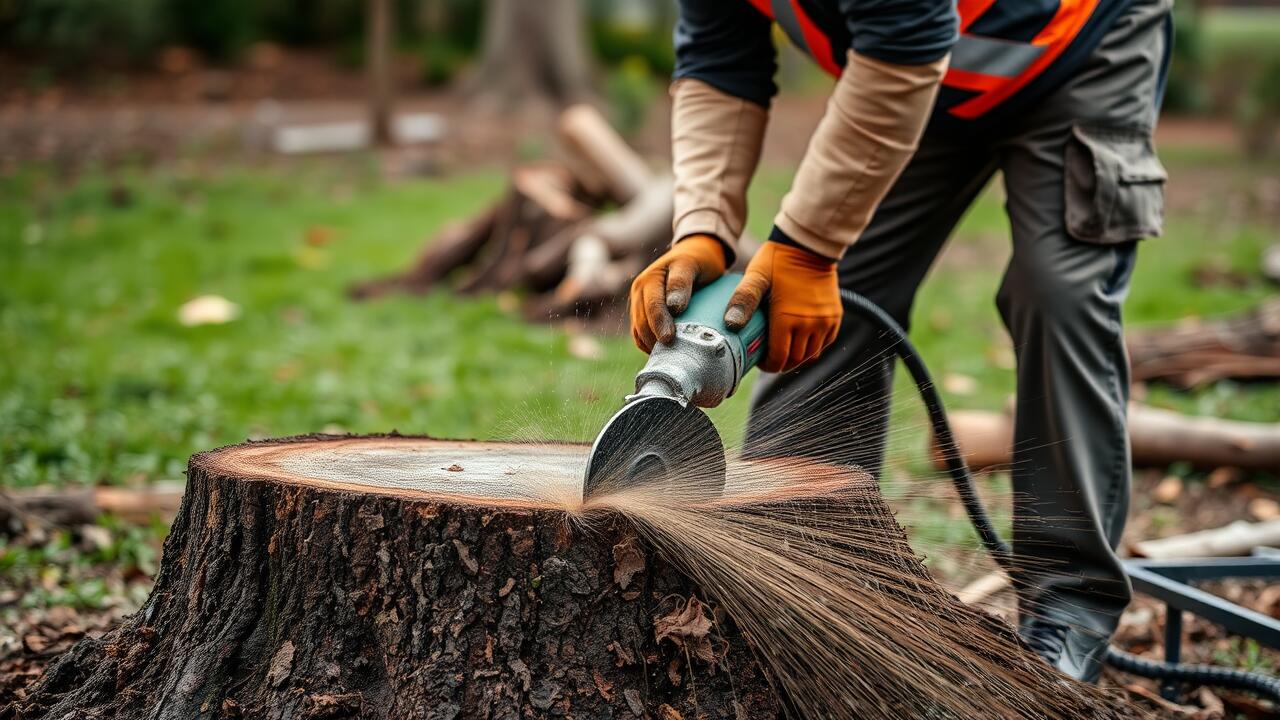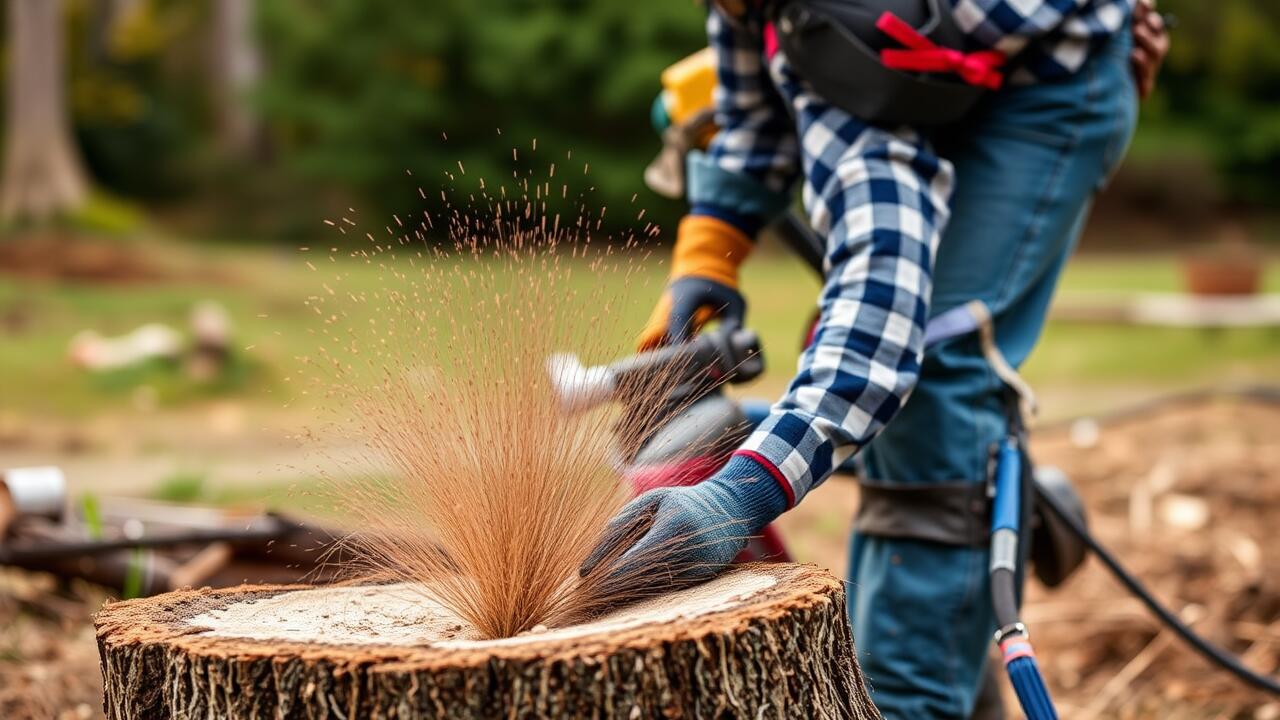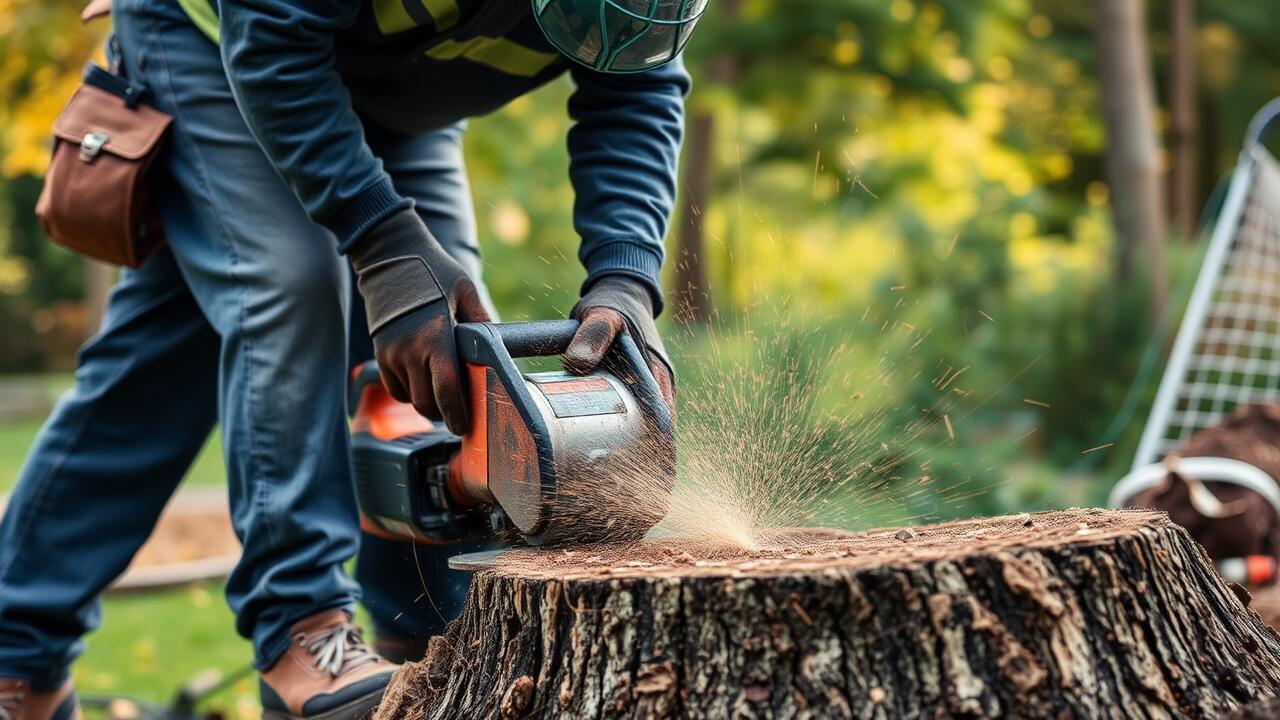
DIY Stump Grinding Considerations
When considering DIY stump grinding, it's essential to assess your own experience level and access to the right tools. Grinding a stump can be labor-intensive and requires specialized equipment that may not be readily available to everyone. Proper planning is crucial to avoid potential mishaps. Familiarizing yourself with safety measures and procedures will significantly reduce the chances of injury or damage to your property.
In areas like Druid Hills, Atlanta, stump grinding may also present challenges due to soil type and underground utilities. Homeowners should locate any pipes or cables before starting the process. Additionally, the presence of roots in the ground can complicate the task, making it more laborious than anticipated. If the stump is near valuable landscaping or structures, careful maneuvering is necessary to prevent accidental damage. Always weigh the costs and benefits before committing to a DIY approach.
Risks and Challenges Involved
Engaging in stump grinding presents a series of risks that homeowners should consider before proceeding. The grinding process can produce flying debris, which poses a safety hazard to those nearby. Without proper safety gear, an individual may face injuries from flying wood chips or tools used in the grinding process. Additionally, the noise generated during grinding can be disruptive, particularly in residential neighborhoods such as Druid Hills, Atlanta, where local regulations may restrict loud activities during certain hours.
Challenges also stem from the equipment required for stump grinding. Many homeowners lack the necessary machinery, which can be both costly and complex to operate. Renting or purchasing stump grinders often involves a learning curve, and improper use can lead to inefficient grinding or damage to surrounding areas. This situation can be compounded by issues with accessibility, as some stumps may be in tight spaces or near structures where maneuvering equipment is impractical.
The Role of Soil Health
Soil health plays a crucial role in determining whether a tree stump will regrow after being ground down. Nutrient levels, pH balance, and microbial activity all contribute to the overall vitality of the surrounding ecosystem. When a stump is ground, the root system and decaying wood can alter the nutrient availability in the soil, influencing how new growth might develop. In well-maintained soil, organic matter from the decomposing stump can enhance nutrient content, potentially fostering the growth of new vegetation.
In areas like West End, Atlanta Stump Grinding, local soil conditions may dictate the outcome of stump grinding practices. Healthy soil can support various organisms that help break down organic material, creating a suitable environment for new plants. Conversely, poor soil health can hinder any potential regrowth, leading to a barren spot where the stump once stood. The interactions between soil quality and stump management practices can significantly impact the landscape's future, regardless of whether grinding is the chosen method.
Impact on Potential Regrowth
After a stump is ground down, the likelihood of regrowth largely depends on the type of tree and the conditions surrounding the stump. Many species have the ability to sprout new shoots from the remaining root system, particularly if any part of the root is left intact during the grinding process. In areas such as Druid Hills, Atlanta Stump Grinding services often focus on ensuring thoroughness, yet some roots may be missed, leading to potential new growth.
Soil health plays a crucial role in determining if regrowth occurs. Stumps left in soil that is rich in nutrients and moisture are more likely to produce new sprouts. Conversely, poor soil conditions can hinder any attempts at regrowth, making the stump a less dominant feature within the landscape. Homeowners in Druid Hills are encouraged to consider soil amendments or alternative stump management methods for better control over their yards’ vegetation.
Alternatives to Stump Grinding
Stump removal can be achieved through alternative methods that may be more suitable for some homeowners. Chemical treatments are one option, where products are applied to the cut surface of the stump to accelerate decomposition. These chemicals can break down the wood more quickly, allowing for a more natural removal process. This method requires patience, as it can take several months for the stump to fully decay.
Another viable alternative is natural decomposition, which involves covering the stump with soil and compost. This method promotes microbial activity and encourages the growth of beneficial organisms. Over time, this organic matter will break down the stump into nutrient-rich soil. For those in Druid Hills, Atlanta Stump Grinding can provide essential insights on how to effectively manage stumps while considering local conditions.
Other Methods of Stump Management
Homeowners seeking alternatives to traditional stump grinding may consider methods like chemical treatments or natural decay processes. Chemical treatments often involve applying stump remover products designed to speed up decomposition. Though effective, these chemicals can pose risks to nearby plants and groundwater if not used carefully. Natural decay, on the other hand, relies on time and environmental conditions, allowing fungi and insects to break down the stump naturally. This method is less intrusive but may take several years before the stump fully disappears.
Another popular option is to convert the stump into a decorative feature. Creative homeowners can transform their stumps into planters or garden sculptures, providing aesthetic value while also addressing the issue of stump removal. This approach helps enhance the landscape, especially in residential areas like Druid Hills, Atlanta Stump Grinding. Moreover, these features can attract wildlife and support biodiversity, making stumps a potential asset rather than just a nuisance.
FAQS
Will a tree stump grow back after it has been ground down?
No, the stump itself will not grow back after grinding because the grinding process removes the main structure of the stump. However, if the tree had a healthy root system, new shoots may sprout from the roots.
How long does it take for new shoots to appear after stump grinding?
If new shoots do appear, they can typically emerge within a few weeks to a few months, depending on the tree species and the health of the root system.
Can I prevent new growth from occurring after stump grinding?
Yes, you can prevent new growth by applying herbicides to the freshly ground stump area. It’s important to follow the manufacturer’s instructions and consider the environmental impact.
Is stump grinding the best option for tree removal?
Stump grinding is a popular option for tree removal because it reduces the stump to mulch, but it may not be the best choice for every situation. Factors such as soil health, surrounding vegetation, and future landscaping plans should be considered.
What are some alternatives to stump grinding?
Alternatives include manual removal, using chemical stump removers, or allowing the stump to naturally decompose over time. Each method has its own advantages and considerations based on your specific needs.



